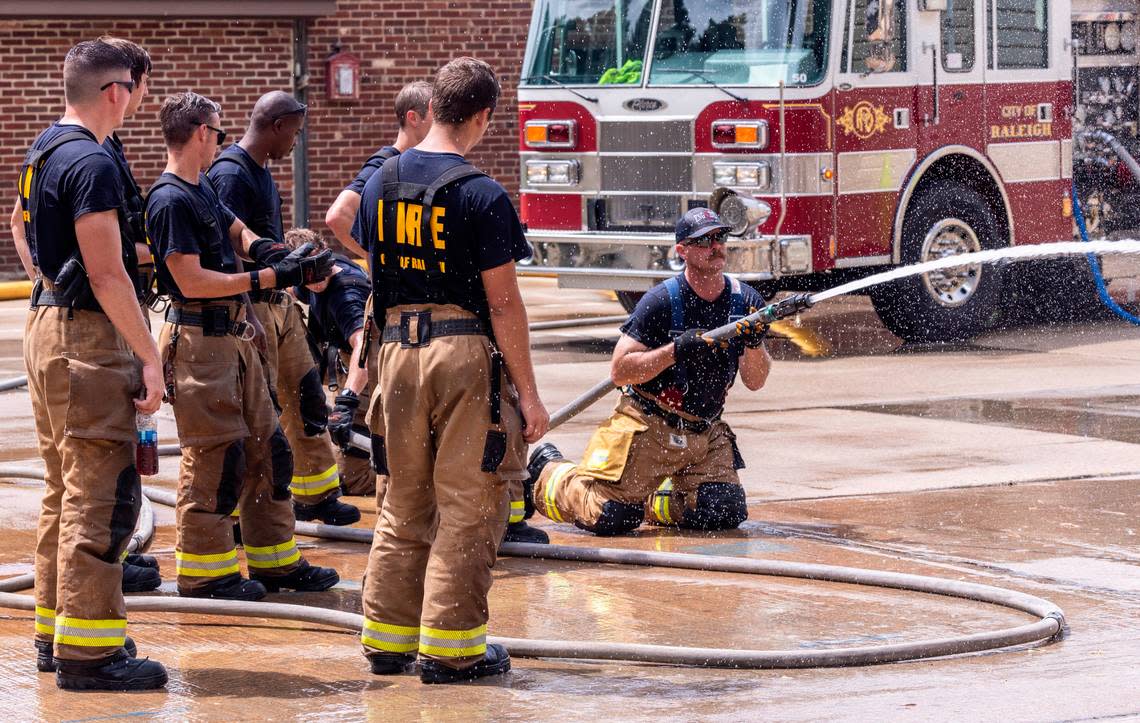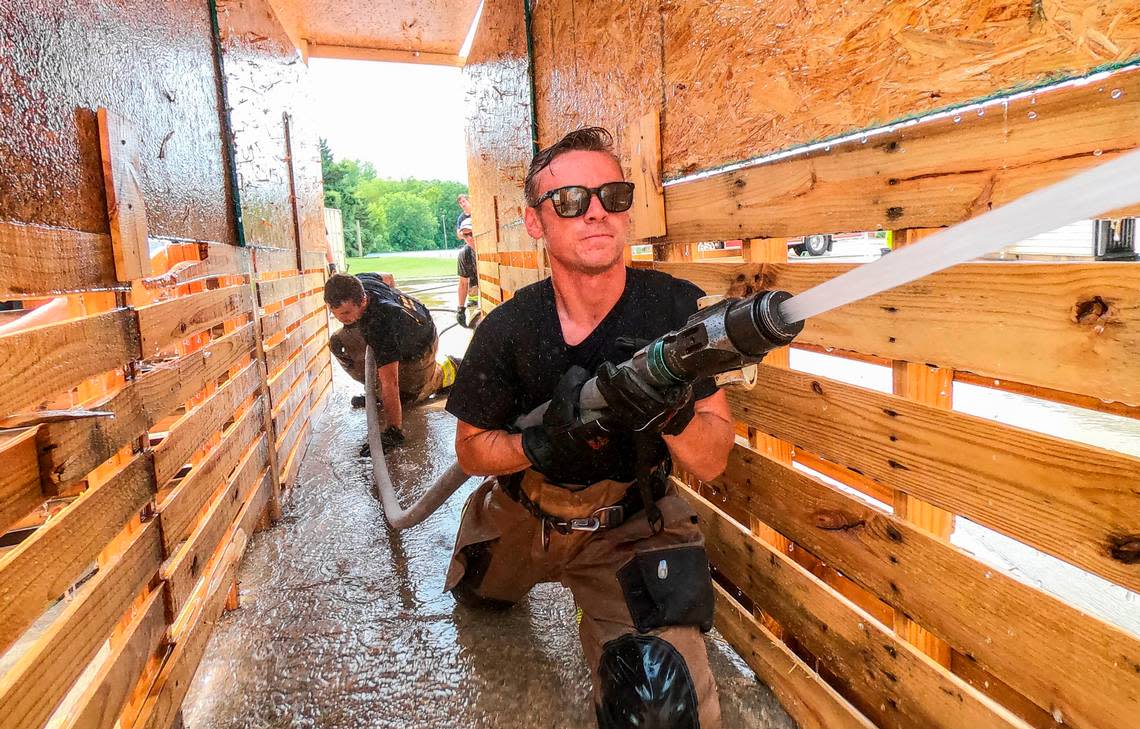Raleigh Fire Department ‘strained’ to maintain service level as city grows
The Raleigh Fire Department can’t maintain its level of service as pressure mounts for the city to grow east, fire officials warned elected leaders this week.
The City Council must decide whether to annex land to the southeast and northeast of the city and risk “significant emergency response delivery issues,” Raleigh Fire Department leaders said during a work session about the challenges facing the department.
“Raleigh Fire has historically been diligent in projecting service needs and then planning new stations and adjusting staffing accordingly,” according to a memo sent to the council. “However, the recent pace of growth in Raleigh has strained the department’s ability to maintain the level of performance that it has previously achieved.”
Nearly 1 in 9 calls outside city limits
While the city has grown by about 5 additional square miles over the last seven years, the Raleigh Fire Department has seen a 36% increase in calls over the same time period. Those calls include fire, accident and medical responses.
Raleigh, along with other Wake County towns and cities, has an informal mutual aid agreement meaning the Fire Department backs up other departments outside city limits.
In 2022, nearly 11% of the 53,238 calls for service for Raleigh Fire were from outside the city of Raleigh jurisdiction.
“There are parts of Wake County that are eligible for annexation to Raleigh where it may be difficult to provide fire protection services to the degree that is needed for Raleigh Fire Department to maintain industry benchmarks and more generally to ensure protection of life and property to the same extent as existing incorporated areas,” according to a memo in the City Council meeting materials.
All fire calls get an initial “full alarm” assignment, which includes four engine trucks and two ladder trucks. Other trucks are added or rescinded once more information is available.
New stations, personnel needed
The National Fire Protection Association outlines how long it should take for the first and second company to get to a fire and how long it should take to deploy a full alarm assignment. If the annexations are approved, the Raleigh Fire Department would not meet some of those standards without new fire stations and personnel.
For example, it would take the first Raleigh company about four minutes to get to a proposed annexation location off of Hodge Road. But the second company wouldn’t arrive until an average of eight minutes, according to the fire department’s projections. That’s two minutes longer than the NFPA’s standards.
Not meeting the standards could affect the city’s insurance service office rating, which could raise insurance premiums for property owners.
In the short-term a new ladder truck would be required for the northeast part of the city and a temporary station would be needed in the southeast, according to the fire department. Long-term, another fire station would be needed in the northeast and two stations in the southeast.
No new fire stations have been built since 2015. The construction cost for a new station is estimated at $26.5 million plus nearly $5 million in annual staffing and equipment.
“We definitely have to develop a plan to make sure that we have proper coverage, not just for future growth but for our current residents,” said Mayor Pro Tem Corey Branch, who represents southeast Raleigh in District C.
He supports more fire stations in that part of the city, but that takes planning. In the meantime, he’d like to see more trucks in this year’s budget.
Council member Megan Patton, who represents northeast Raleigh in District B, also backs expanding in the area.
“We need to expand our services,” she said. “There’s just a lot to figure out about the how and how quickly of it all.”
Raleigh could also consider more formal partnerships with the Wake County fire departments to cover service gaps.
Annexation requests
All of the annexations before the City Council are voluntary and are being requested by the property owners. But the city has an interest in how the area grows.
Some of the requests are within the city’s extraterritorial jurisdiction (ETJ), which means the property is outside the city’s limits but still subject to the city’s zoning and development rules. Property owners don’t currently pay city property taxes and don’t get city services. Some annexations are outside the ETJ but are continuous to the city’s borders.
Raleigh may also expand its ETJ to include area around the eastern Interstate 540 area. The city has conducted the Southeast Special Area Study, which calls for a gradual expansion of its ETJ in southeast Wake County over a decade. A public hearing for the plan is set for April 4.
“A big part of that study was this idea of encouraging and requiring denser nodal higher-value growth,” said Patrick Young, the city’s planning director. “When 540 was extended in western Wake County, the communities out there decided to allow almost exclusively single-family development, which is often revenue negative growth, because it doesn’t have enough value and mixture of uses to support the service levels required. So we’re making very intentional efforts to try to move towards that higher-growth side.”
The City Council held its first budget work session this week, and the city manager will present her recommended budget in the coming months.
The Raleigh Fire Department has a budget of nearly $74 million and a total of 627 budgeted employees.



